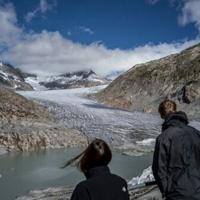Intense floods and droughts are becoming more common and are seen as a warning sign for the unpredictable nature of the planet’s water cycle due to climate change, according to a warning from the United Nations on Monday.
In the past year, rivers experienced their driest period in over 30 years, glaciers lost a significant amount of ice mass, and there were numerous floods, as reported by the UN’s World Meteorological Organization.
“Water serves as an indicator of the impact of climate change,” said WMO Secretary-General Celeste Saulo in a statement accompanying the State of Global Water Resources report.
Saulo emphasized that the warming of the atmosphere has led to a more erratic water cycle, making rainfall, floods, and droughts more extreme and unpredictable.
Last year, which was recorded as the hottest on record, saw high temperatures, prolonged droughts, and widespread dry conditions, along with numerous floods worldwide.
These extreme events are influenced by natural climate phenomena as well as human-induced climate change, with the warming atmosphere holding more moisture and worsening drought conditions.
– Massive glacier melt –
Last year, Africa experienced the highest number of human casualties due to water-related disasters, with floods causing devastating effects in countries like Libya, the Greater Horn of Africa, the Democratic Republic of Congo, Rwanda, Mozambique, and Malawi.
Currently, over 3.6 billion people have inadequate access to fresh water, a number expected to rise to over five billion by 2050.
Despite these challenges, the UN is urging for better monitoring of fresh water resources, the development of early warning systems, and investments in water infrastructure to mitigate the impacts of climate-related water disasters and protect communities and wildlife.
While stabilizing the climate is a long-term challenge, urgent action is needed to preserve water resources and address the increasing water insecurity affecting millions globally.





